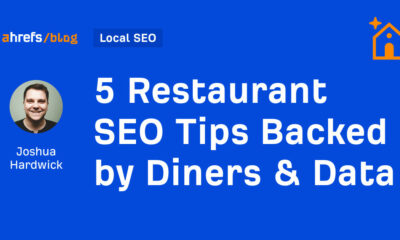For the past 20 years at Real Story Group, we’ve helped hundreds of enterprises make good martech stack decisions, and over that span, I’ve been fortunate to advise a wide array of technology selection teams. I saw a lot of things go well, and many things go…not so well.
Oh, the lessons we learned!
The most important finding, though, was that spreadsheet-heavy, waterfall-based selection methods just weren’t cutting it anymore. So we started counseling a more agile approach grounded in modern concepts around user-centered design, empirical testing, iterative adaptation, and cross-team participation. In short: design thinking.
Eventually, my colleague Jarrod Gingras and I encapsulated those lessons in a book, “The Right Way to Select Technology” (Rosenfeld Media), from which I’ll share some of the most important lessons and tips here.
Most important lessons
Before getting into specific tips, let’s review three meta-lessons.
1. Tell < show < test
Vendors love to talk about what their technology can do and will readily discuss case studies. They will show what their platforms can do as well, but this typically entails canned demos, and it falls to you to map their relevancy to your needs. You need to perform hands-on testing no matter the toolset before making any final decisions. In other words, never skip a bake-off.
2. The biggest-name vendors often have the most technical debt
Some of the most prominent martech vendors today have been around for some time, and their systems — including those they acquired — are getting long in the tooth. To cover for this, they get very aggressive about marketing, sales and, uh, “analyst relations.” They become less enthusiastic about in-depth technical and functional vetting. That doesn’t mean you should exclude big-name suppliers; just that you should not short-cut any diligence. And never allow yourself to get bullied.
3. Get clear about stack-fit
Martech stacks are evolving to meet the needs of an omnichannel world, and vendor strategies have shifted accordingly. This is a time fraught with both significant gaps and overlaps in your stack. For any new or replacement platform, get clear about where those services “fit” in the larger picture.
Get the daily newsletter digital marketers rely on.
Top tips
Our book publishers encouraged us to conclude each chapter with a series of practical tips, and we ended up typing out more than a hundred all told.
For those that prefer quick reads, here are some of my all-time favorite tips:
- Be sure to articulate the costs and impact of doing nothing at all in any business case. In martech, stasis can become more costly than change.
- Never exclude diverse IT / DataOps stakeholders (systems, security, development, architecture, data analysts) from decision making: they represent critical interests and expertise.
- Conversely, never abdicate decision making just to IT, and place a businessperson to chair decision-making bodies. This promotes alignment with enterprise objectives.
- Take a candid measure of your internal abilities and resources, and gauge your organization’s appetite for risk as well as cutting-edge methodologies: know thyself before trying to change.
- Always start with the customer user experience and work your way back into enterprise systems, rather than vice-versa.
- Pay more attention to developing human-centered business scenarios than “checklist” requirements.
- In any RFP/tender/demo, ask “how” questions instead of “what” to better illuminate the inner workings of the toolset.
- Allocate time and resources in proportion to the criticality of this technology to your overall business success. If this is a “platform” in your MarTech Mall, then you’ll want to pay serious time and attention. Boutique supplier? Not so much…
- Give yourself and the vendor enough demo time, typically a full day.
- Avoid overly complex scoring methodologies to rate vendors, typically quite unscientific; instead, rank them according to your business objectives.
- Adopt and modify a “SWOT”-based decision analysis to fit your culture.
- Price and contract negotiations are an iterative process that you should start as early as possible.
- Never buy licenses for a potential future need, no matter how good a deal is proffered; instead, drag the buying process out over time: buy only what you need, when you need it, and in the order that you need it.
- Don’t underestimate “strategic intangibles” in considering overall fit. In particular, I encourage you to focus on the customer ecosystem around any platform. Do customers meet up in person or virtually? Vibrancy here is the best measure of future viability.
- Services firms can be critical to your success, so evaluate them with the same care and test-based approach that you vetted the core technology.
Hopefully, this gave your selection team enough food for thought to modernize the way you go about decision-making. If you’d like to see all the tips, find them in this series of posts.
Good luck. And ping me on LinkedIn if you have any questions.
Real Story on MarTech is presented through a partnership between MarTech and Real Story Group, a vendor-agnostic research and advisory organization that helps enterprises make better marketing technology stack and platform selection decisions.
Opinions expressed in this article are those of the guest author and not necessarily MarTech. Staff authors are listed here.








![How to Create A Website to Sell Products In 8 Steps [+6 Expert Tips] How to Create A Website to Sell Products In 8 Steps [+6 Expert Tips]](https://articles.entireweb.com/wp-content/uploads/2024/10/1727868370_How-to-Create-A-Website-to-Sell-Products-In-8.webp-400x240.webp)
![How to Create A Website to Sell Products In 8 Steps [+6 Expert Tips] How to Create A Website to Sell Products In 8 Steps [+6 Expert Tips]](https://articles.entireweb.com/wp-content/uploads/2024/10/1727868370_How-to-Create-A-Website-to-Sell-Products-In-8.webp-80x80.webp)










You must be logged in to post a comment Login